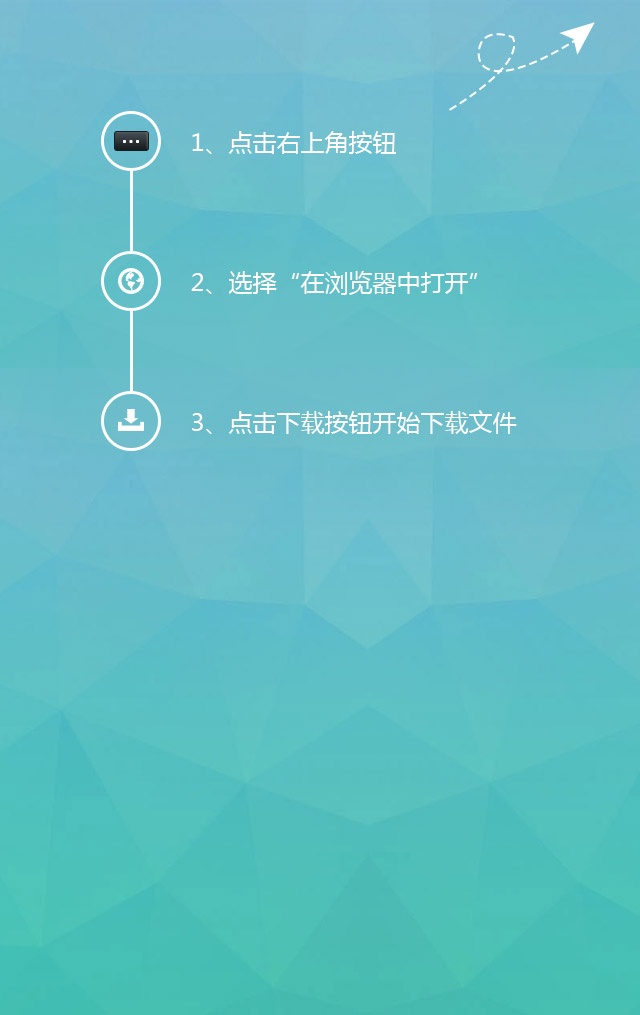Components | One article takes you through the concept of "diodes" in electronic components
1、 Understanding diodes

1 . What is a diode
A diode is a commonly used semiconductor device, which is composed of a P-N junction formed by a P-type semiconductor and an N-type semiconductor, with corresponding electrode leads led out at both ends of the P-N junction, and sealed with a tube shell.
2 . Common structures of diodes

(1) Point contact type: The junction area is small, the junction capacitance is small, so the allowed current of the junction is small, and the maximum operating frequency is high.
(2) Surface contact type: With a large junction area and capacitance, the junction allows for a high current and a low maximum operating frequency.
(3) Flat type: The junction area can be small or large, with small junctions having high operating frequencies and large junctions allowing for large currents.
3. Classification of diodes
There are many types of diodes, and according to their actual functions, common diodes can be divided into rectifier diodes, voltage regulator diodes, detection diodes, light-emitting diodes, photodiodes, switch diodes, varactor diodes, fast recovery diodes, bidirectional trigger diodes, etc.
(1) Rectifier diode
The circuit symbol of a rectifier diode is "LED-3.jpg", and its main function is to rectify AC into DC. Rectifiers are mainly used in rectifier circuits.

The shell packaging of rectifier diodes often adopts three forms: metal shell packaging, plastic packaging, and glass packaging. Due to the high forward current of rectifier diodes, they are mostly surface contact diodes with large junction area and capacitance, but operate at a low frequency.
(2) Zener diode
The commonly used circuit symbols for voltage regulator diodes are de-5.jpg/de-6.jpg, which are surface bonded crystal diodes made of silicon material. They use the characteristic that the voltage during reverse breakdown of P-N junction does not change with the current to achieve the purpose of voltage regulation.

From the appearance, it is similar to ordinary low-power rectifier diodes, mainly in three packaging forms: plastic packaging, metal packaging, and glass packaging.
When a voltage regulator diode operates in a reverse bias environment, the reverse current must be limited to safely operate in a reverse breakdown state. If the reverse current is too large, it can also cause damage to the voltage regulator diode.
(3) Detector diode
A detection diode is a device that uses the unidirectional conductivity of a diode to detect low-frequency signals superimposed on a high-frequency carrier wave. Its circuit symbol is "LED-8.jpg".

The detection diode has high detection efficiency and good frequency characteristics, and is commonly used in the detection circuit of radios or the automatic gain control circuit of recorders.
The packaging of detection diodes often uses glass or ceramic shells to ensure good high-frequency characteristics.
The detection efficiency is a special parameter of the detection diode, which refers to the percentage ratio of the peak value of the sinusoidal AC signal voltage applied to the input terminal to the DC output voltage generated on the resistive load of the detection diode output circuit.
(4) Varactor diode
Varactor diode is a nonlinear semiconductor component made by utilizing the characteristic that the capacitance of P-N junction changes with the applied bias voltage. It plays the role of a capacitor in circuits and is widely used in high-frequency and microwave circuits such as parametric amplifiers, electronic tuning, and frequency multipliers in ultra-high frequency circuits. Its circuit symbol is LED-10.jpg or LED-11.jpg

Varactor diode is a special diode made based on the principle of P-N junction space charge having capacitance characteristics. The capacitance between the two poles of the diode is 3-50 pF, which is actually a voltage controlled fine-tuning capacitor mainly used for tuning circuits.
(5) Photodiode
Photodiode, also known as photodiode, has the circuit symbol of LED-13.jpg
The characteristic of a photodiode is that when it is exposed to light, the reverse impedance of the diode will change accordingly (with the increase of light exposure, the reverse impedance will decrease from large to small). Using this characteristic, photodiodes are commonly used as photoelectric sensor devices.
.

(6) Switching diode
The circuit symbol of a switching diode is LED-15.jpg, which is a type of diode specially designed and manufactured to control the "on" or "off" of a circuit using the unidirectional conductivity of a crystal diode.
Switching diodes have very fast conduction/cutoff speeds, which can meet the needs of high-frequency and ultra-high frequency circuits, and are widely used in switching and automatic control circuits.

Switching diodes are generally packaged in glass or ceramic shells to reduce the capacitance of the tube shell.
The time from cutoff (high impedance) to conduction (low impedance) of a general switching diode is called the turn-on time; The time from conduction to cutoff is called the reverse recovery time, and the sum of the two times is collectively referred to as the switching time.
The switching time of a switching diode is very short, making it an ideal electronic switch with fast switching speed, small size, long lifespan, and high reliability.
(7) Light emitting diode
Light emitting diodes are devices that convert electrical energy into light energy. LEDs made of different materials can emit light of different colors, including red, yellow, green, orange, and others.


(8) Fast recovery diode

(9) Bidirectional trigger diode

2、 Recognize the identification of diodes
1. Identification of diode names
Usually, semiconductor diodes are named using the direct labeling method, but the specific naming specifications vary depending on the country, region, and manufacturer.
(1) Naming and labeling of domestic diodes
The naming specifications of domestic diodes are to label the category, material, specifications, and other main parameters of crystal diodes on the surface of the diode. According to national labeling regulations, the naming of crystal diodes consists of five parts.

① Product Name: Use the number "2" to represent the diode and the effective polarity pin.


④ Serial number: represented by a number, indicating different varieties of similar products to distinguish their external dimensions and performance indicators, sometimes omitted.
⑤ Specification number: Use letters to indicate the specifications, models, and grades of diode production, sometimes omitted.
Example:

According to regulations, the annotation text for "3DU28" on the diode indicates that there are 3 PN junctions on the diode, "D" indicates that the diode is a P-type silicon material diode, "U" indicates that the diode belongs to a photoelectric tube, and "28" is the product number of the diode.
(2) Naming and labeling of American made diodes
The naming of diodes produced in the United States is quite confusing. According to the regulations of the American Electronics Industry Association,
The naming of diode models consists of five parts.



③ Registration Mark: Electronic Industries Association (EIA) registration mark. N indicates that the device has been registered with the Electronic Industries Association (EIA) in the United States.
④ Serial number: Represented by multiple digits, the registration sequence number of the American Electronics Industry Association.
⑤ Specification number: Use letters to represent the improved product logo of the same model. A. B, C, D... The different grades of the same model of device are represented by letters=
(3) Naming and labeling of Nissan diodes


② Registration Mark: The JEIA registration mark of the Japan Electronics Industry Association, represented by a letter S, indicates a semiconductor device that has been registered with JEIA.
③ Material/Polarity: Represented by letters, indicating the polarity and type of material used for the diode.
④ Serial number: Use numbers to represent the sequence number registered with the Japan Electronics Industry Association (JEIA), with integers starting from "11" indicating the sequence number registered with JEIA; Devices with the same performance from different companies can use the same serial number; The larger the number, the more recent the product.
⑤ Specification number: Use letters to represent the improved product logo of the same model. A. B, C, D, E, and F indicate that this device is an improved version of the prototype product.
Note: Common diode parameters:



On the diode, the annotation text "1N4004" can be seen. According to regulations, "1" refers to the diode, "N" indicates that the diode is an N-type diode, and "4004" is the number of the diode.
3、 Understand the main parameters of diodes
1. Common parameters
(1) Maximum overall current
The maximum rectified current refers to the maximum forward average current allowed to pass through a diode during long-term continuous operation, which is related to the PN junction area and external heat dissipation conditions. The larger the PN junction area, the greater the maximum rectified current. When the current exceeds the allowable value, the PN junction will burn out due to overheating. In a rectifier circuit, the forward current of the diode must be less than this value.
(2) Maximum reverse voltage
The maximum reverse voltage refers to the highest reverse operating voltage provided to ensure that the diode is not broken down. The maximum reverse voltage in the relevant information is about half of the breakdown voltage to ensure the safe operation of the diode. The maximum reverse voltage of point contact diodes is about tens of volts, while surface contact diodes can reach hundreds of volts. If the diode is subjected to excessive reverse voltage in the circuit, it will be damaged.
(3) Maximum reverse current
The maximum reverse current refers to the reverse current of a diode when the maximum reverse voltage is applied at a specified temperature during operation. The larger the reverse current, the worse the unidirectional conductivity of the diode, and the greater the influence of temperature; The smaller the reverse current, the better the unidirectional conductivity of the diode. The reverse current of silicon tubes is relatively small, usually below a few microamperes; The reverse current of germanium tubes is relatively large, generally ranging from tens of microamperes to hundreds of microamperes.
It is worth noting that there is a close relationship between reverse current and temperature, with the reverse current doubling for every 10 ℃ increase in temperature.
(4) Maximum operating frequency
The maximum operating frequency refers to the highest frequency at which a diode can operate normally. When selecting a diode, its operating frequency must be lower than the maximum operating frequency. When the maximum operating frequency is exceeded, the diode will not be able to exhibit good unidirectional conductivity due to the effect of junction capacitance.

推薦
-

-

QQ空間
-

新浪微博
-

人人網
-

豆瓣

